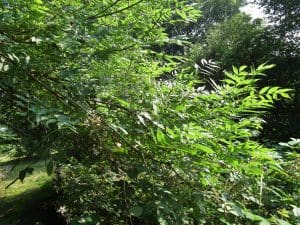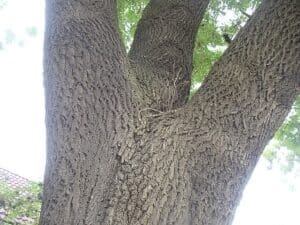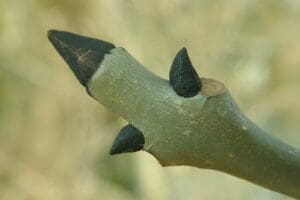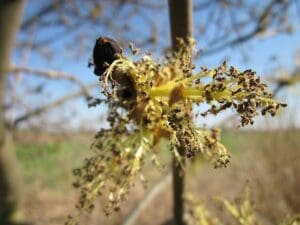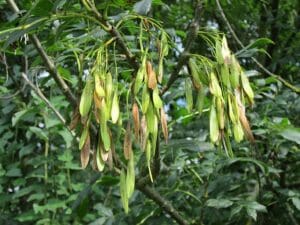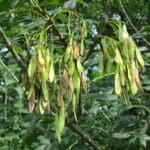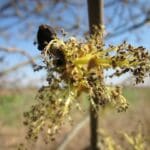Ash / Spring / Summer / Edible
Common Names
Ash, Common Ash, European Ash.
Botanical Name
Fraxinus excelsior
Scientific Classification
Kingdom – Plantae
Order – Lamiales
Family – Oleaceae
Physical Characteristics
Stems
Light grey bark, that fissures with age, the stems are smooth with distinctive black buds, which are arranged in opposite pairs.
Leaves
Large compound leaves, up to 40 cm long, are divided into four or eight pairs of lance-shaped leaflets with sharply toothed margins. The leaves can move in the direction of sunlight, and sometimes the whole crown of the tree may lean in the direction of the sun. Ash leaves also fall when they are still green.
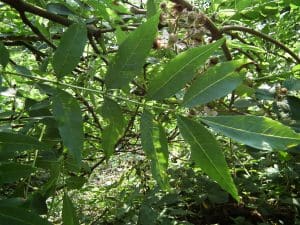
Flowers & Seeds
Black flower buds are followed by clusters of greenish-white or purplish flowers. Seeds – Once the female flowers have been pollinated the seeds develop. The seeds or keys have a long wing. They are green when fresh and turn brown with age.
Habitat
One of the most common trees in the UK. Found almost everywhere currently suffering from Ash dieback disease which causes brittleness and death.
Known Hazards
None known.
Could be Confused with
Rowan (Sorbus aucuparia) or Elder (Sambucus nigra) but elder has fewer leaflets, spongy bark and an off putting musty smell when the leaves are damaged. Rowan’s leaves are serrated and the tree produces white umbels of flowers, followed by red/orange berries in the autumn.
Edible Uses
The seeds have a distinctive spicy taste similar to black cardamom and go great with rice dishes. They are eaten as a pickle in Europe and Asia.
The shoots can be eaten when young and can be eaten raw or steamed.
The sap of the tree can be collected in spring and is commonly used to make ash wine.
Notes on Herbal uses
Ash is considered to be a healing tree and although its use in modern medicine has fallen it was once believed to be a cure for snake bites and leprosy amongst many other ailments.
Extra notes from the Foragers
Ash was the choice wood for spear and axe hafts as well as for farming and garden tools due to its dry and strong wood!



